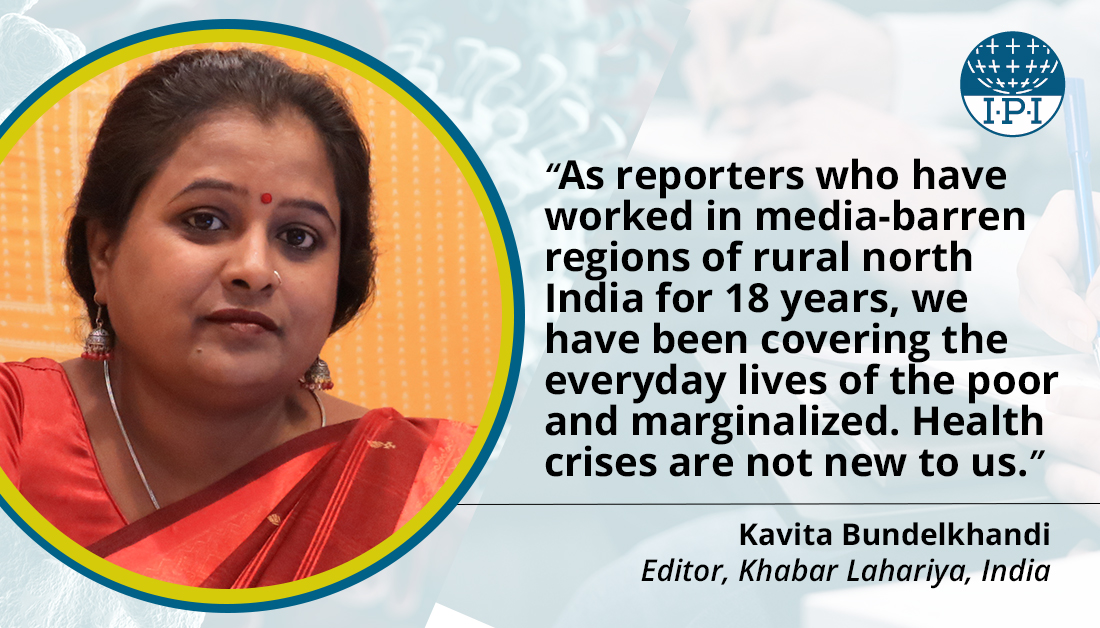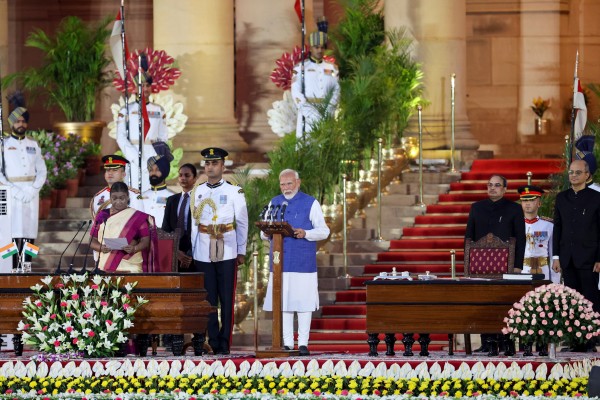Kavita Bundelkhandi, Editor, Khabar Lahariya, India
As reporters who have worked in media-barren regions of rural north India for 18 years, we have been covering the everyday lives of the poor and marginalized.
Health crises are not new to us.
The first challenge for us covering COVID19, therefore, was understanding the very nature of this beast and ensuring that our team understood the risks of reporting.
Our team prides itself on breaking the reporter-respondent wall, as well as caste and class norms, and goes fearlessly into homes and hospitals, where other reporters do not. This now needed to be restrained, and required much more editorial intervention and planning than we usually had.
Video stories and live broadcasts were carefully planned and then pulled off the air if reporters themselves were breaching health and safety regulations. The first few days of lockdown were spent as if on a different planet, gingerly exploring its surface, its boundaries, its laws.
For us the questions to cover were:
What are the stories for this moment?
Would harvest season still continue?
How would nomadic and daily wage earners survive?
What about the poorer farmers?
We couldn’t keep ourselves indoors, we found it impossible to maintain our reporter identities separate from our humanitarian relief worker ones.
Additionally, the rules of the lockdown meant that the harassment, which we often face as women reporters from marginalized communities, in other words, with less claim on the public domain, was even harsher.
The administration in the Northern Indian state of Uttar Pradesh was keen to control the information about Covid-19 pandemic, given the amount of misinformation and possible panic that could ensue. Press passes were given out only to some reporters, making it very challenging to cover the conditions in hospitals and quarantine shelters, or be out and about at all.
Other reporters in the team had their mobility and access restricted. Our scooters were impounded by the police, our footage was deleted, if we happened to be filming neglect in hospitals, or the beating of poor people in line to withdraw cash.
Another challenge was keeping our head above the strong currents of unverified and sensational news, pushing our peers to check their facts, pushing our own team to not be tempted to be the first to break news that could do more harm than good.
Every day there are new challenges and every day we’re learning new ways of dealing with them. The questions around the future of media and sustainability, come to us in newer forms too, every single day.



